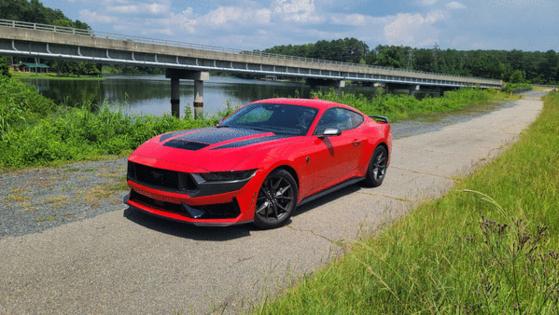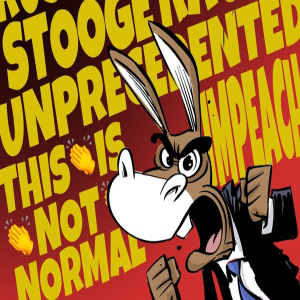Winners, losers, movers: Highlights of US auto sales six months in
Published in Automotive News
There's never a dull moment in the U.S. market as automakers hustle to divine consumer trends, navigate federal regulations, juggle tariff-driven plant production, and dodge activist Molotov cocktails.
The first six months of 2025 saw robust sales on track for an annual 16.3 million in unit sales as gas prices dropped and tariffs rose. America’s love affair with trucks and SUVs continued with sales making up 82% of the light vehicle market. Just 10 years ago, cars made up 43% of the market. This year? Just 18%.
General Motors Co. brands led the herd with 17.6% of the market, followed by Japanese behemoth Toyota Motor Corp. at 15.2% and Ford Motor Co. with 13.6%, according to Autodata figures. The General gobbled a point-and-a-half of market share while its two closest rivals also gained.
On other other hand, compared to 2015, Stellantis NV (then Fiat Chrysler Automobiles) declined to 7.4% from 12.3% and Nissan fell to 6% from 8.7%, stumbling while a company named Tesla Inc. (despite losses the last 12 months) came out of nowhere to reach a 3.3% share versus 0.1% a decade ago.
Enough macro, let’s talk micro. Dig deeper and the numbers reveal a raft of rivalries and rages. What are the best-sellers? Are EVs still the bee’s knees? Is Wrangler tying up Bronco?
The Detroit News sifted the numbers.
Best-sellers. The Ford F-Series and Chevy Silverado continue to slug it out in the marquee pickup duel. F-Series was King of Sales (again) with 412,848 units sold over Silverado’s 284,038. Throw in Chevy’s premium sibling GMC Sierra, however, and the GM twins are tops with 453,220 units combined.
A year ago, three non-pickup SUVs were climbing their way to the 400,000-plus sales summit: Toyota RAV4 (248,295), Tesla Model Y (198,030), and Honda CR-V (196,204). This year, RAV4 (239,451) and CR-V (212,561) are on pace again, but Model Y has hit a pothole with just 150,171 in sales — a victim of the slow rollout of its remade 2025 model and an often violent, anti-Tesla campaign aimed at Trump ally and brand CEO, Elon Musk.
EVs. Tesla Model 3 took up some of the slack, registering a 38% sales jump (to 101,323 units) with its re-worked sedan. So popular is the Model 3 that it not only was the hands-down best-selling luxury sedan (out-selling its closest competitor and segment icon, the BMW 3-series, 7:1), but it outsold every mainstream compact sedan except for the Honda Civic and Toyota Corolla.
Alas, for government regulators targeting 60% EV adoption by 2030, Model 3 sales were an anomaly as the electric market flat-lined at 7.4% share of the market, according to Cox Automotive, despite an expanded menu of offerings.
“The consumer tolerance level for EVs is about 7-8% of the market with all the federal incentives in place,” said ISeeCars.com senior analyst Karl Brauer in an interview. “And as those incentives go away over the next year, we expect to see EV sales continue to slide.”
Despite losing 6% market share in 2025, Tesla still dominated EV sales with 44.7% of the pie. Winners so far are the Chevy Equinox EV, which vaulted to third place in the EV beauty contest in its first stage appearance — its 27,749 sales eclipsing the best sales year of Chevy’s previous entry-level EV, the Bolt, by over 4,000 units.
Equinox EV’s sales paled next to its internal-combustion-engine-powered stablemate, the redesigned Equinox, which surged nearly 50% with 157,638 units sold.
Amidst the EV stall, Honda Motor’s first two battery-mobiles — the Honda Prologue and Acura ZDX — shared GM’s Ultium platform and combined to sell 26,652 units. That’s more than the combined 22,053 units sold by their peer, mid-size GM products built on the same platform: the Chevy Blazer EV and Cadillac Lyriq.
Muscle cars. The Mustang vs. Challenger vs. Camaro war ended as Stellantis and GM exited the segment — for now — to focus capital on EVs. Only Mustang is still standing.
Yet, the pony car icon didn’t profit from its rivals’ demise, losing 14% of sales year-over-year to 23,551 units from 27,444.
“Muscle cars are a discretionary purchase, and their sales decline is evidence of consumer concern about the broader economy,” said analyst Brauer. “These cars also have dedicated buyer groups like pickup trucks. Challenger people are not going to buy a Mustang.”
Not even EV muscle-inspired customers. After ditching its Challenger and Charger V-8 models under regulatory duress, Dodge debuted an earth-pawing, all-electric Charger EV coupe that sold just 4,299 units — well below the 21,217 sold by the Challenger ICE coupe as it rode into the sunset this time last year.
Jeep v. Bronco. At the heart of SUV-mania is the battle for off-road supremacy between the Jeep Wrangler and Ford Bronco. Wrangler continued to lead the horse race with 85,624 sales (11% gain over ‘25), but Bronc is coming fast.
Revived in 2021 after a 25-year hiatus from the market, Bronco surged past the Toyota 4Runner with 72,063 sold — a 43.7% gain and within striking distance of King Wrangler.
“Wrangler has the advantage of consistent, decades-long production and a loyal fan base,” said Brauer. “Ford has a huge, built-in audience from its trucks, but Bronco’s growth suggests it is pulling in a lot of non-Ford loyalists as well.”
Bronco’s halo appeared to help sales of its more affordable junior sibling, the Bronco Sport, which doesn’t share Big Brother’s ladder frame but is still plenty tough. Its 72,438 units tallied a 21.7% gain over a year ago.
Sedan sunset. In 2015, six of the Top Ten best-selling U.S. vehicles were sedans, led by the Toyota Camry. This year, only Camry made the Top 10.
Forty brands vied for U.S. market attention a decade ago. This year that number is 48 as new players like Ineos, Polestar and Rivian test the waters. The next six months’ tariffs and EV welfare pullback will test them as well.
©2025 www.detroitnews.com. Visit at detroitnews.com. Distributed by Tribune Content Agency, LLC.








Comments